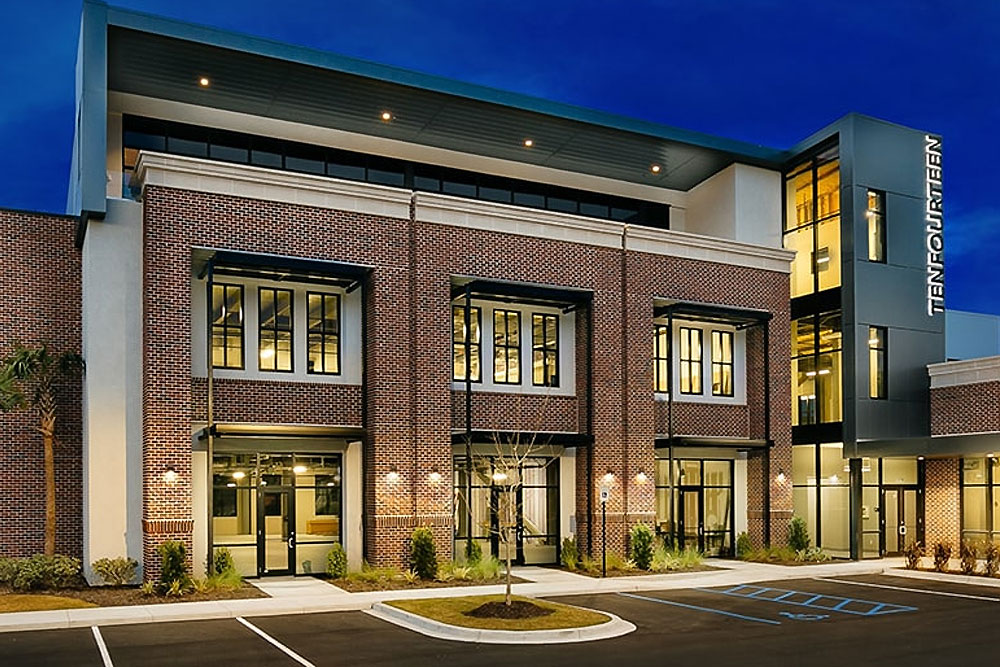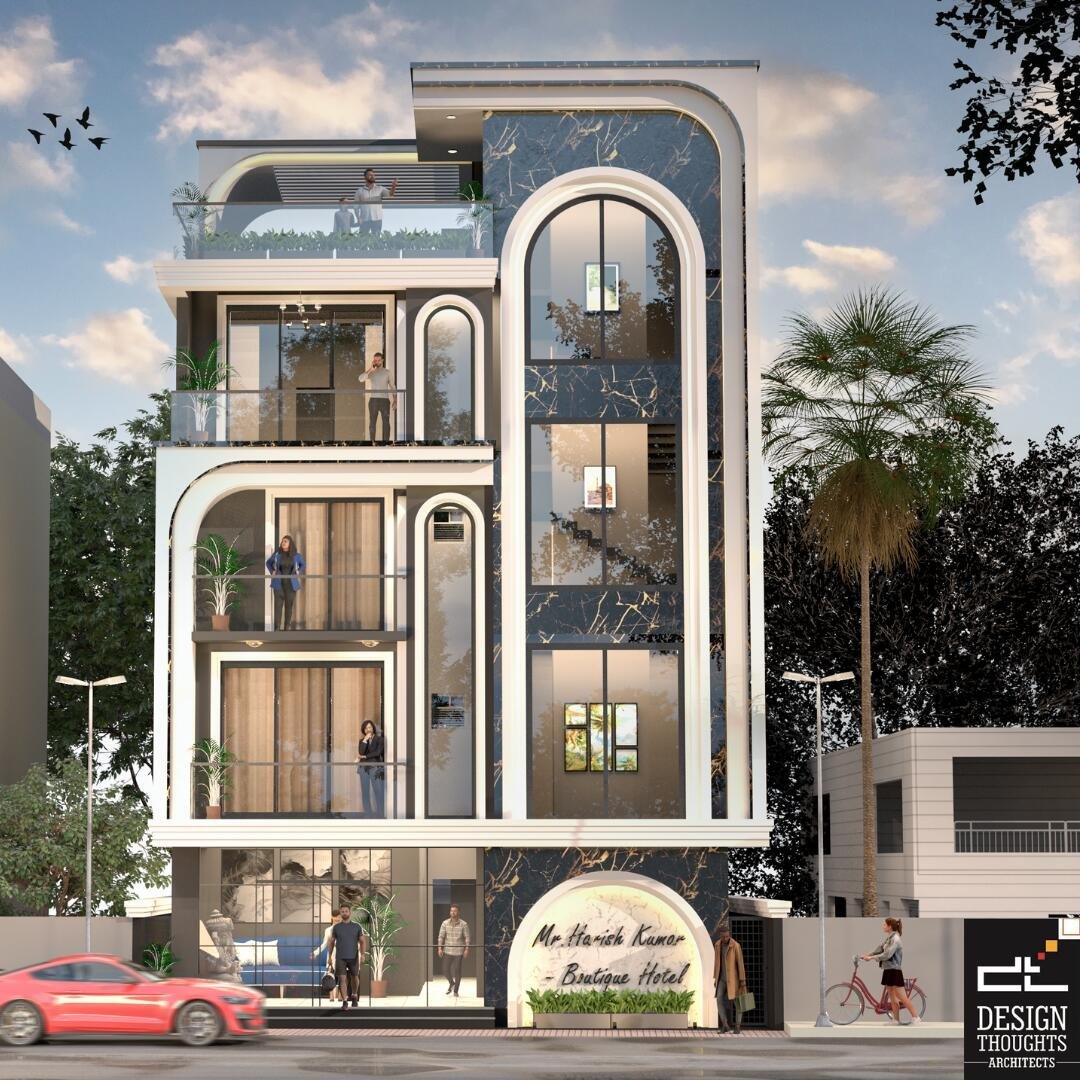How commercial architects Balance Form with Practicality
Just How Commercial Architects Can Change Your Business Space With Professional Style Providers
Commercial architects play an essential duty in improving organization settings. Their expertise in layout can substantially enhance both capability and appearances. By creating rooms that reflect a brand name's identification, they boost operational effectiveness and worker fulfillment. The impact of their work prolongs beyond simple look. Recognizing the nuances of cooperation and sustainability can result in transformative outcomes. What specific elements make these changes effective?
Understanding the Role of Commercial Architects
Commercial architects play an essential duty in shaping company settings that are both practical and visually pleasing. They focus on creating rooms tailored to the certain needs of organizations, making certain that every square foot is utilized efficiently. These specialists incorporate elements such as spatial format, lights, and materials to improve productivity and worker wellness. By teaming up with clients, industrial architects gather understandings into functional needs and brand name identification, converting these into ingenious designs.Additionally, they browse complicated building codes and zoning legislations, making certain compliance while optimizing style capacity. Their knowledge expands to sustainability methods, promoting energy effectiveness and environmentally friendly materials in their jobs. Via their creative vision and technical knowledge, business architects not only produce attractive rooms but also foster atmospheres that advertise collaboration and growth. Inevitably, their contributions greatly impact the general success and image of a company.
Benefits of Professional Layout Solutions

Tailoring Rooms to Your Brand Identity
Tailoring areas to a brand's identification is necessary for conveying its core worths and goal. Commercial architects play a crucial role in boosting an organization's visual identification through thoughtful layout selections. By lining up architectural aspects with brand principles, companies can create settings that reverberate with clients and employees alike.
Showing Brand Worths
Just how can a well-designed room symbolize a business's core values? Commercial architects play a crucial duty in shaping settings that resonate with a brand name's identification. By integrating aspects such as color design, materials, and formats, they produce rooms that mirror the essence of the organization. For instance, a technology company might select open designs and modern-day home furnishings to convey technology and cooperation, while a high-end brand name may pick classy finishes and intimate rooms to evoke exclusivity and elegance. Thoughtful style not just enhances capability but likewise cultivates a solid connection in between workers, clients, and the brand name. Eventually, a well-crafted environment works as a tangible representation of a company's mission and vision, enhancing its worths at every touchpoint.
Enhancing Visual Identity
What components can properly elevate a brand's aesthetic identification within a commercial space? Commercial architects play a pivotal role in integrating style functions that reverberate with a company's principles. Color plans, typography, and products can be tactically chosen to show brand worths while ensuring aesthetic charm. In addition, incorporating logos and brand name imagery right into the design can produce a natural aesthetic story. Lighting style can better boost the environment, assisting consumer perceptions and experiences (commercial architects). Layout and furnishings choices should align with the brand name's character, whether it's modern-day, typical, or cutting-edge. Inevitably, a well-designed business room not just attracts customers but also strengthens brand acknowledgment, developing a long lasting find impression that fosters loyalty and engagement
Enhancing Capability and Performance
Enhancing functionality and efficiency in commercial spaces involves optimizing space use and creating process that enhance operations. Architects concentrate on creating formats that lessen lost area while helping with smooth modifications in between tasks. This strategy not just enhances productivity yet likewise contributes to an extra natural workplace.
Maximizing Area Usage
Effective space utilization is a crucial element in industrial architecture, where the layout needs to balance aesthetic appeals with performance (commercial architects). Architects employ different approaches to make the most of readily available square footage while ensuring that each location offers an unique function. By examining operations, traffic patterns, and customer needs, architects can develop layouts that improve both staff member productivity and customer experience. Multi-functional spaces, versatile furnishings plans, and maximized storage remedies are essential parts in achieving this objective. In addition, including natural light and open areas fosters a much more welcoming atmosphere, additional boosting the energy of the environment. Ultimately, efficient room utilization not only improves operational effectiveness yet additionally adds positively to the total brand name image, making it an essential factor to consider in business layout
Streamlined Workflow Design
How can a well-designed workflow transform an industrial area right into a center of efficiency? Structured operations layout concentrates on maximizing the physical format and functional procedures within an organization setting. By purposefully organizing workstations, meeting areas, and resources, architects can remove unnecessary activity and boost cooperation. This thoughtful style lessens diversions and promotes interaction, permitting staff members to concentrate on their jobs extra successfully. Furthermore, incorporating modern technology right into the process can further automate processes, minimizing time invested in routine jobs. Consequently, companies experience improved worker morale and increased result, developing a dynamic atmosphere that fosters technology. Eventually, buying streamlined operations style not only improves performance however likewise positions an industrial Continued area for sustainable development and success.
Promoting Cooperation Through Design
Although modern-day workspaces typically prioritize specific efficiency, the layout of industrial spaces increasingly emphasizes cooperation as a crucial chauffeur of development and team cohesion. Architects play a crucial role in producing settings that promote interaction among staff members. Open designs, multifunctional rooms, and strategically placed common locations encourage spontaneous discussions and conceptualizing sessions.Incorporating elements such as movable furniture and versatile meeting spaces enables groups to reconfigure rooms based on their collective demands. Additionally, integrating innovation, like interactive white boards and video clip conferencing devices, improves the ability to interact effectively, no matter of location.Natural light and biophilic design components also contribute to a much more inviting environment, advertising convenience and well-being, which are vital for productive team effort. By concentrating on these facets, commercial architects can create dynamic atmospheres that not just boost collaboration yet additionally drive total business success.
Sustainable Design Practices in Commercial Style

Instance Researches: Effective Transformations by Commercial Architects
The application of sustainable style techniques has not only reshaped the technique to business architecture however has actually additionally resulted in impressive transformations in various business areas. One notable case is the redesign of a technology firm's headquarters, where architects integrated natural light and eco-friendly walls, leading to enhanced worker wellness and efficiency. This improvement decreased energy costs by 30% and enhanced the company's public image.In another instance, a store underwent a complete overhaul, making use of recovered products and energy-efficient systems. This not just brought in eco-conscious customers yet additionally increased foot web traffic by 25%. A third instance included a business office that embraced an open-plan format with get redirected here adaptable work spaces, cultivating cooperation amongst teams. The architects' concentrate on developing a lively and adaptable environment significantly increased worker complete satisfaction. These study exhibit exactly how industrial architects can develop impactful areas that line up with company objectives and sustainability initiatives.
Often Asked Inquiries
Just How Much Do Commercial Architecture Provider Commonly Expense?
The expense of commercial style services differs commonly, generally ranging from $100 to $250 per hour. Elements affecting prices consist of project intricacy, area, and the designer's experience, making it necessary for companies to obtain thorough estimates.
What Sorts Of Businesses Profit Many From Commercial Architects?
Numerous companies, consisting of retail, friendliness, and company offices, significantly gain from business architects. These professionals boost performance, looks, and brand identification, guaranteeing spaces are enhanced for consumer engagement and worker efficiency, inevitably promoting organization growth.
For how long Does a Business Design Task Usually Take?
The timeline for a business design job generally varies from several weeks to numerous months. Variables affecting duration consist of project intricacy, regulative authorizations, and cooperation amongst stakeholders, every one of which can influence overall completion time.
Can I Hire a Commercial Designer for Improvements Only?
Yes, working with a business engineer for renovations is feasible. Numerous architects specialize in restoration jobs, supplying competence in maximizing existing rooms while sticking to guidelines and improving performance, visual appeals, and general worth of the organization setting.
What Credentials Should I Seek in a Business Engineer?
